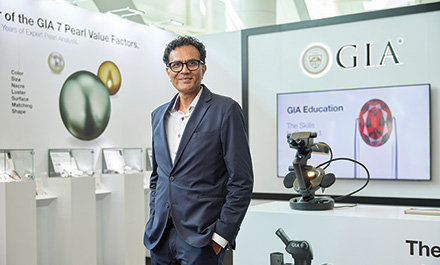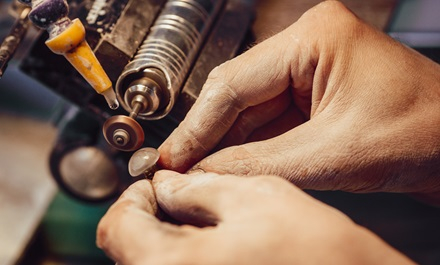Driven by its mandate to protect consumers in the international gemstone and jewellery industry, the Gemological Institute of America is continually bolstering its sustainability initiatives.
This article first appeared in the JNA November/ December 2022 issue.
Fostering consumer confidence and protection in the gemstone and jewellery sector is at the heart of Gemological Institute of America’s (GIA) operations. The institute carries out this mission through extensive research, education and independent grading and analysis, according to Johanna Levy, GIA vice president of environment, social and governance (ESG) programmes.
JNA: How does GIA incorporate sustainability in its day-to-day business, especially when grading diamonds and classifying jewellery?
Johanna Levy: Over the years, GIA has taken significant, impactful steps towards ESG sustainability. GIA is reducing its environmental impact by offering digital-only reports by 2025, saving 20 tonnes of paper and 18.5 tonnes of plastic each year, and reducing transportation-related carbon emissions.
It is also supporting artisanal miners in Africa with basic gemmological knowledge to help them benefit more from the gems that they mine. In the area of supply chain transparency, the institute is offering trusted diamond information through the GIA Diamond Origin Report and GIA Source Verification Service.
JNA: Why should consumers be interested in the origin of their gemstones or jewellery?
Levy: Consumers are increasingly curious about the geographical origin of their gems and jewellery and by which conditions these were made. Armed with this knowledge, they can make better-informed buying decisions. Ethically sourced diamonds sustain communities around the globe. Knowing where your diamond comes from means you can be confident that your diamond was mined responsibly and that it positively impacted its local community. As the world leader in gemmological research, GIA is counting on more than 91 years of scientific and gemmological knowledge alongside cutting-edge technology to deliver matching rough-to-polished confirmation and better serve the trade and buying public. We have also recently expanded our gem origin offerings with GIA Source Verify™, a new service providing retailers and consumers with reliable diamond origin information.
JNA: Are there standards or criteria when purchasing qualified sustainable jewellery?
Levy: Setting a standard for what we mean by ‘sustainability’ in terms of gems and jewellery is a key priority for the industry and GIA. I look forward to collaborating with GIA teams and others in the industry as we work toward that important objective.
JNA: What kind of challenges do you foresee and how can these be resolved?
Levy: Responsible environmental, social and governance initiatives are crucial to achieving real sustainability. And these elements are often interlinked. Case in point is the environmental impact of mining, manufacturing and transportation operations, which many companies are now actively addressing. Consumers now more than ever have a heightened awareness of and desire for sustainably and ethically sourced products. Proof of a diamond’s origin provides peace of mind for a consumer before they purchase. Retailers meanwhile can use this origin information to build trust and credibility with
their customers.
JNA: What is next for GIA on the sustainability front?
Levy: GIA recently established the new position of vice president of ESG programmes and I am honoured to be the first to take on this responsibility. We will work across our institute to integrate sustainability policies and practices into our core business strategy and to advance our consumer protection mission.








